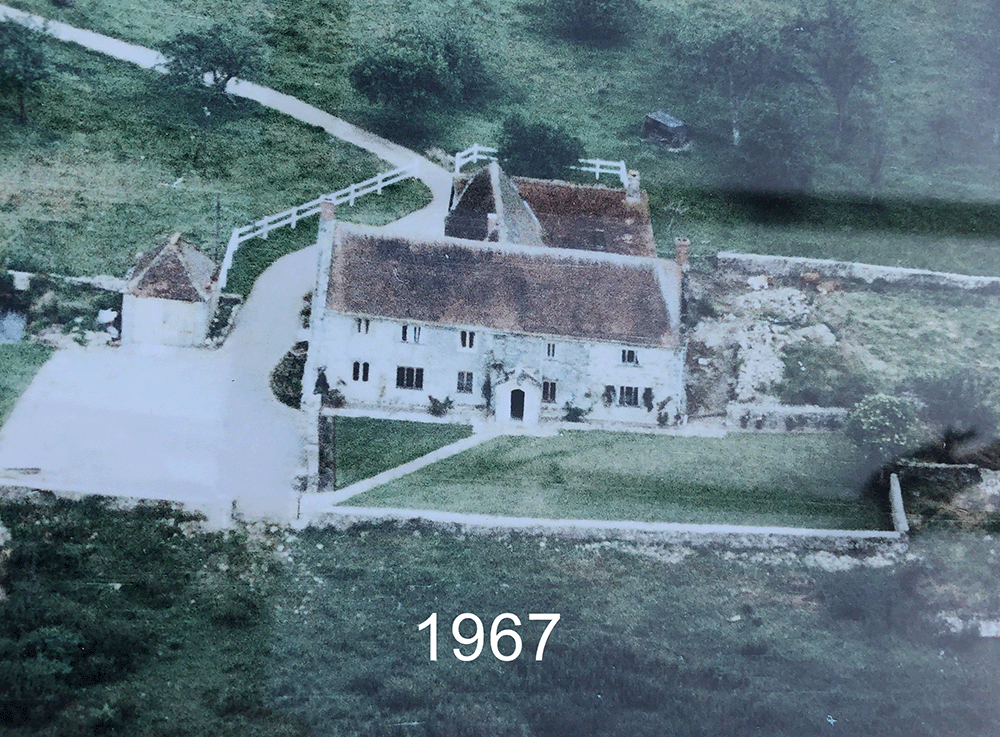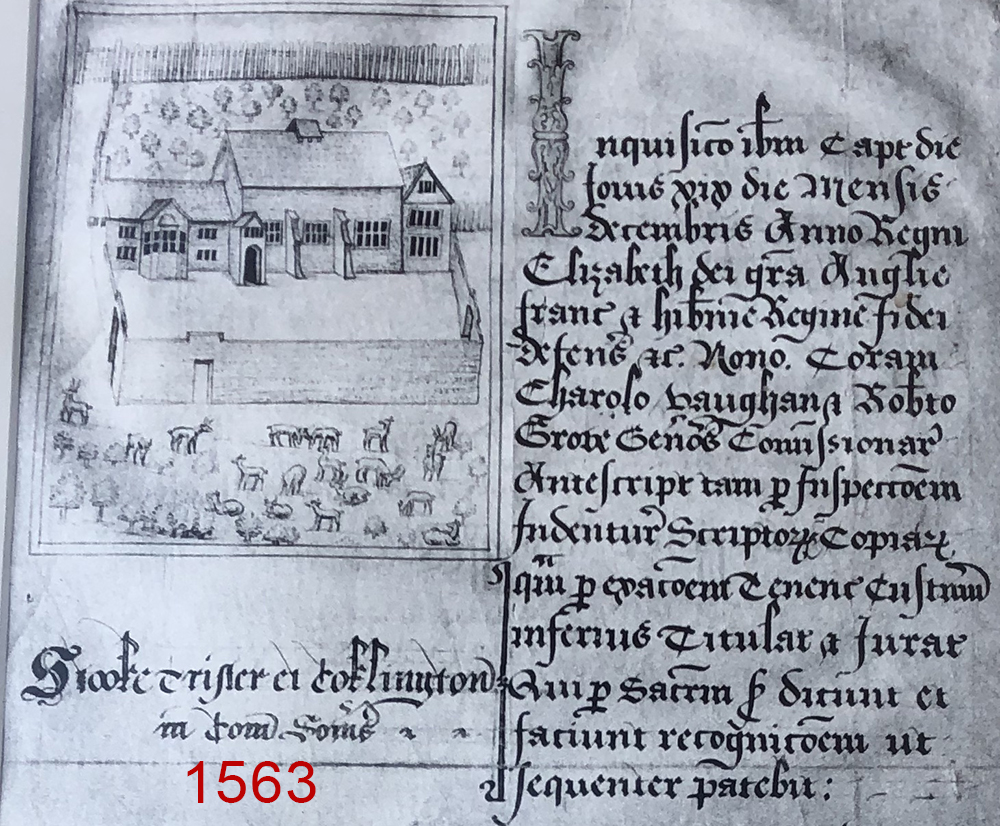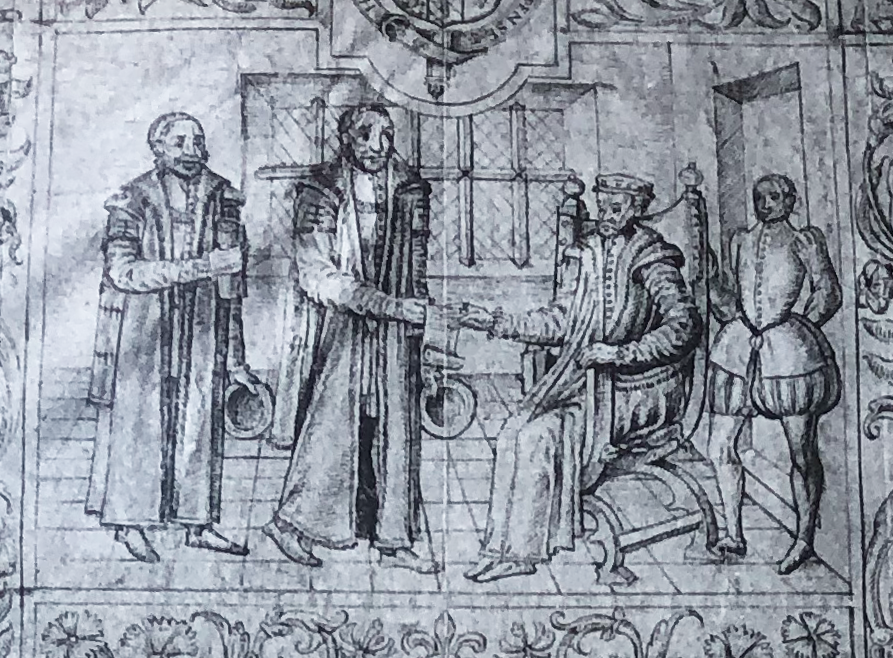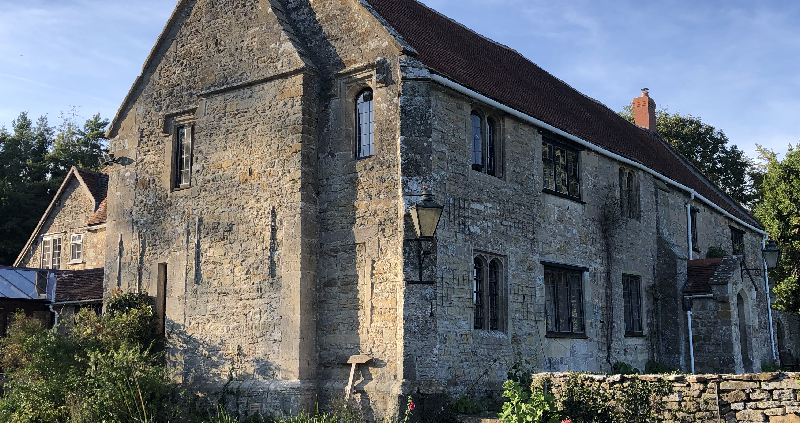What drew me to this property was a sudden change in ownership of Stoke Trister
Walter de Esselega / Ashley was the successor of Bretel de Saint-Clair at Stoke Trister in Somerset. In 1210-12 he answered for ten knight’s fees of the honour of Mortain. This indicated that he held both Stoke Trister and Cucklington in Somerset.1
The following paragraph from no better medievalist than K.S.B. Keats-Rohan lit me up:
“de Sancto Claro, WillelmOccurs in the Pipe Roll of 1129/30 in Dorset and Wiltshire. Apparently successor, perhaps son, of Bretel de St Clair in the barony of Stoke Trister, held of Robert de Mortain in 1086. Perhaps the same as the William who occurs on the Pipe Rolls until 1164/65. Possibly father of Philip de St Claro and of Walter de Esselega (Ashleigh) who held the barony of Stoke Trister in 1166.”2
This Walter de Esselega (Ashley) appeared quite suddenly, leaving me to wonder why. One option was a name change. If that had been the right guess, it would look like this:
Willelm’s son Walter used a different second name (Ashley / Ashbrittle), possibly because he took the name of his land called Ashbrittle (Esselega is the latinized form). In Domesday book (1086), Ashbrittle was held by Bretel St. Clair. His tenant-in-chief was Robert de Mortain, half-brother of William the Conqueror. By 1210-12, Esselega held ten knight’s fees of Mortain, including Ashbrittle, Stoke Trister, and Cucklington. All of those were formerly held by Bretel St. Clair.
E.H. Bates Saved the Day
In the late 1800s, the Reverend E.H. Bates contributed a paper to the “Proceedings of the Somersetshire Archaeological and Natural History Society” entitled “The Family of De Urtaico.”
He pointed out the Bruton Cartulary mention of Walter de Esselega and his wife Felicia (no maiden name mentioned) who gave to the canons of Bruton all the land which they had at Montacute, Bruton, and Langport, and more…and here’s the kicker – “all of which pertained to the inheritance of the said Felicia.”3
It’s difficult to argue with a cartulary. This makes it almost certain that Felicia was Bretel St. Clair’s daughter. And that Walter de Ashleigh benefited from her inheritance.
So where was Walter de Ashleigh from? In the Domesday Survey, the best bet is Ashley in the hundred of Cicementone, mentioned in the chapters for Wiltshire and Gloucestershire. It had a recorded population of 13 households in 1086.
Bates backs me up on Esselega’s origins – Wilts and Gloucestershire where he held Ashley, near Malmesbury, and Sutton, near Heytesbury. In Domesday, it was held by Durand of Gloucestershire no mention of an Ashley or Esselega. The lord in 1066 was Aldred.
The village had a church by 1225, dedicated to St. Andrew. By 1317, it was described as a chapel. Sometime near 1841, the church was deemed dilapidated and unfit. It was town down and replaced with the current church.4 Rondo and I spend a bit of time at another church there.
Is this the original church that was torn down?
In searching for more on Felicia, I found almost nothing. This looks like a list of her children – Sancto-Clare, Felicia de, vi., 319. Gerebert de, v., 18. John de, vi., 319. Pain de, i., 418. Ric. De, vi., 4. Will. De, vi., 319, 460; ix., 70. 5


_______________________________________
Sources:
1 The Oxford Dictionary of Family Names in Britain and Ireland, 2016
2 K.S.B. Keats-Rohan, “Domesday Descendants: A Prosopography of Persons Occurring in English Documents 1066-1166 II: Pipe Rolls to `Cartae Baronum’” (Vol 2) (Hardcover), Boydell Press (April 15, 2002) ISBN-10: 0851158633, ISBN-13: 978-0851158631
3 Bates, Rev. E. H., M.A., Paper presented to the Somersetshire Archaeological and Natural History Society “The Family of De Urtaico” published in “Proceedings of the Somersetshire Archaeological and Natural History Society, Volume 42” Published by Taunton: Barnicott and Pearce, Fore Street, 1896
4 British History Online – A P Baggs and M C Siraut, ‘Stoke Trister’, in A History of the County of Somerset: Volume 7, Bruton, Horethorne and Norton Ferris Hundreds, ed. C R J Currie and R W Dunning (London, 1999), pp. 201-208. British History Online http://www.british-history.ac.uk/vch/som/vol7/pp201-208 [accessed 29 March 2023].
5 Website – A Church Near You – https://www.achurchnearyou.com/church/10904/ accessed 10/31/20
5 John Nurse Chadwick, Attorney at Law, “Index Nominum; Being an Index of Christian and Surnames, (with Arms,) Mentioned in Blomefield’s History of Norfolk.” King’s Lynn: Published for the Author. 1862 Page 270.




